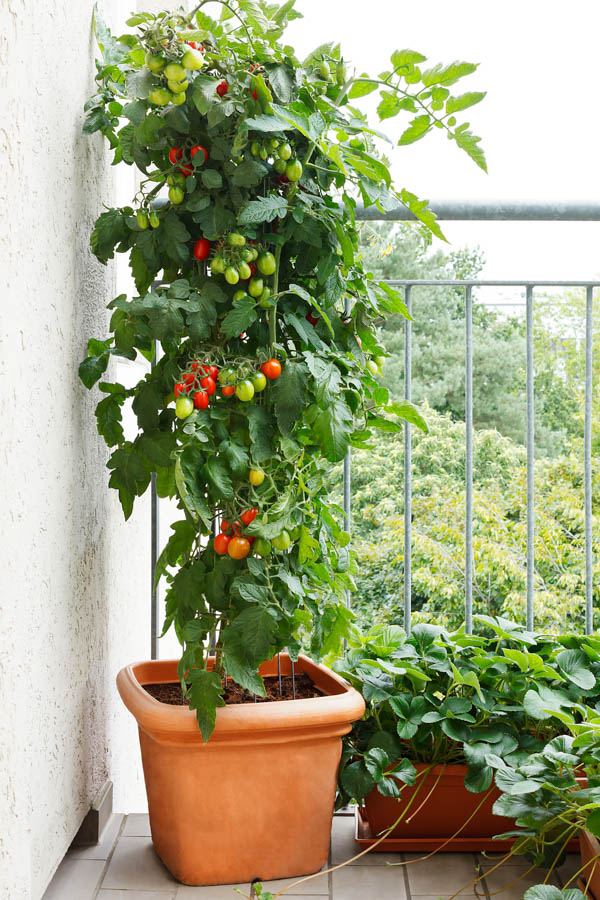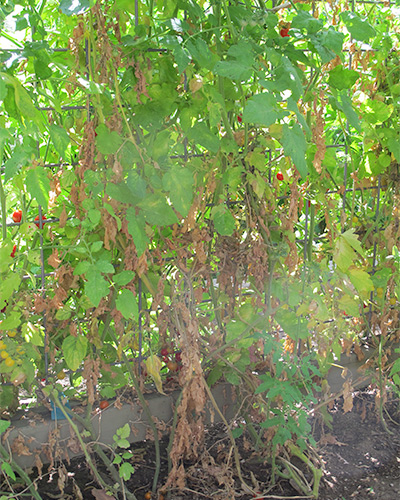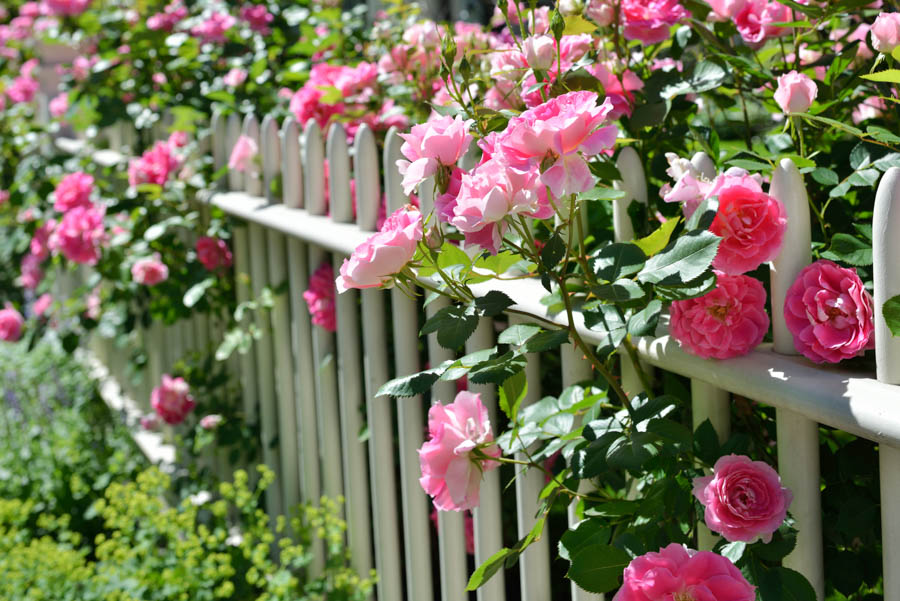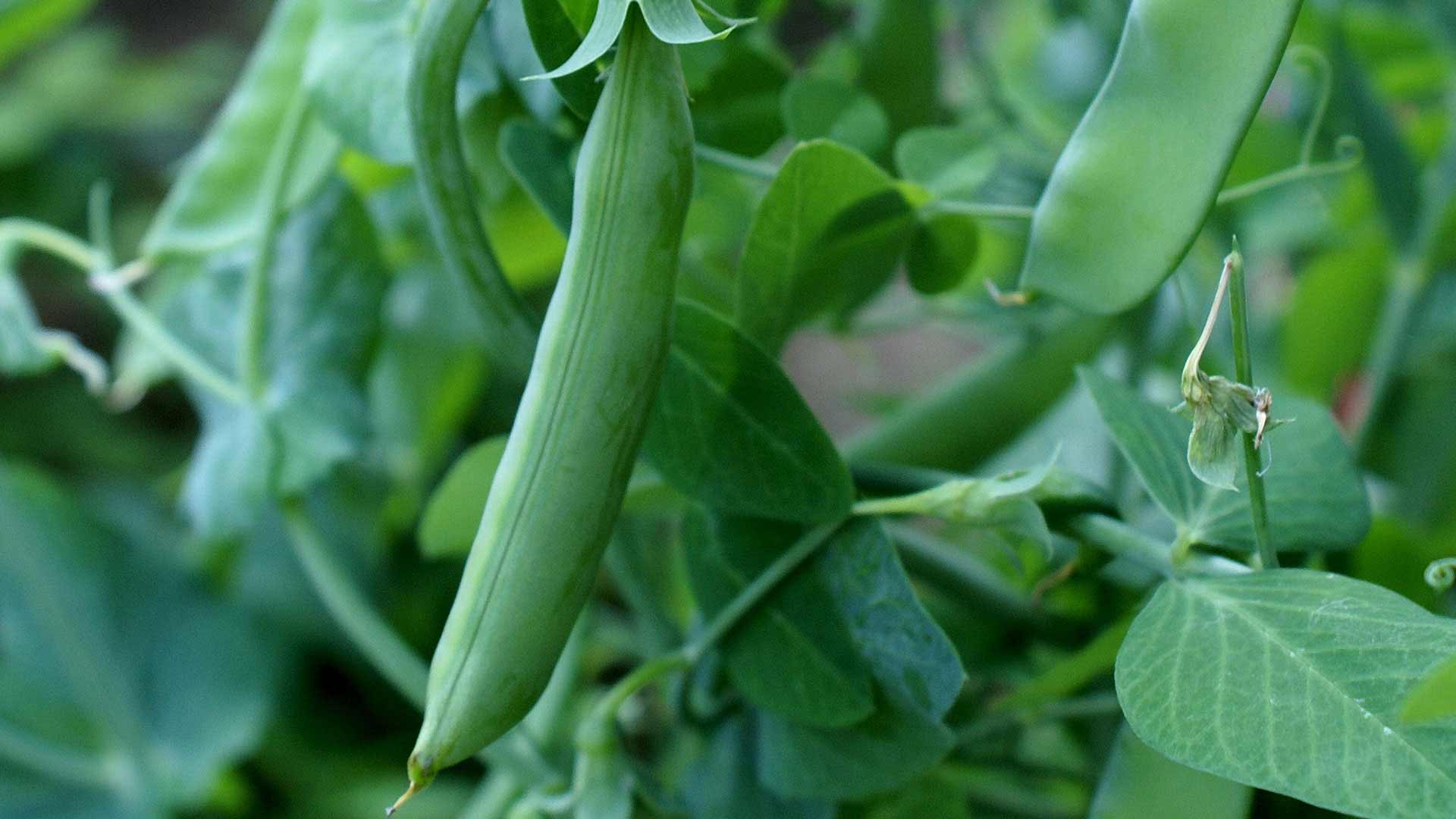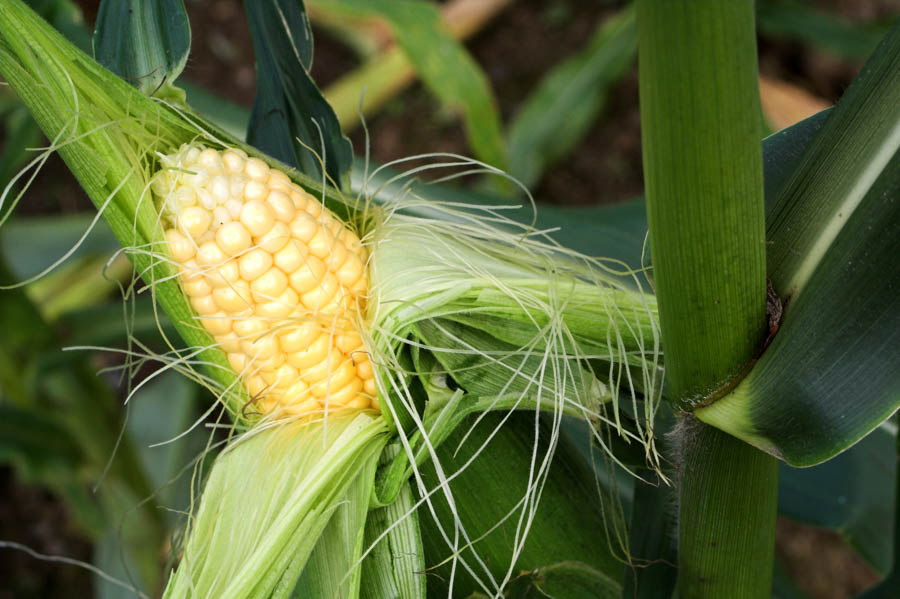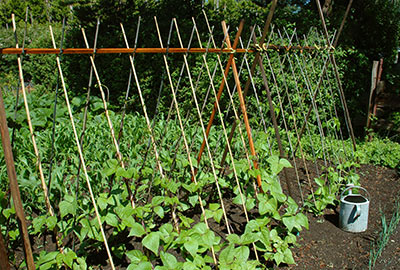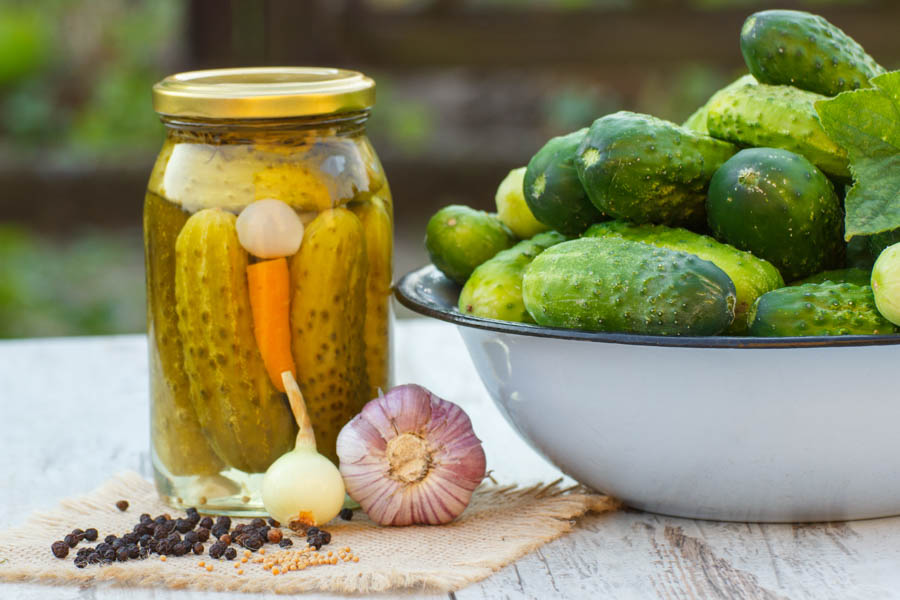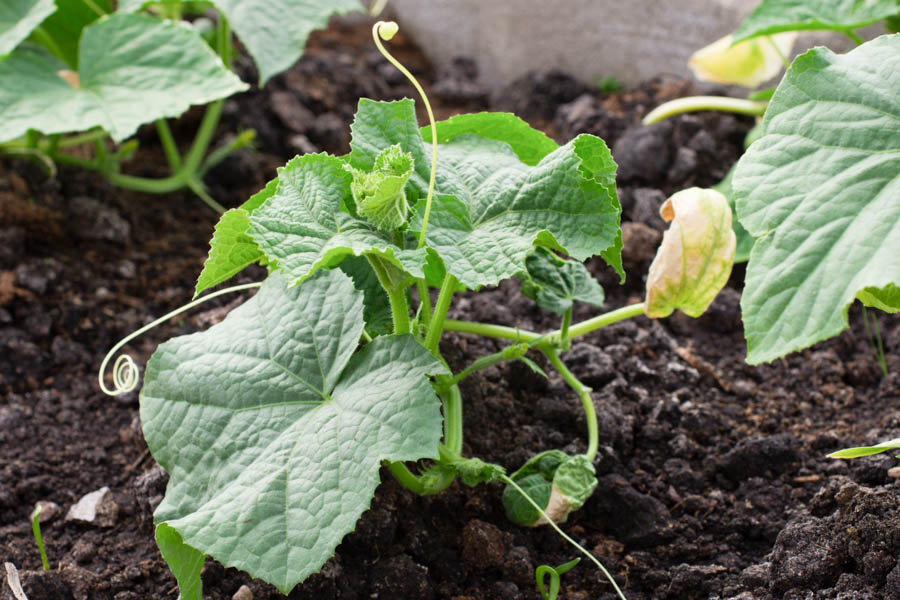Dig in
Growing Tomatoes in Containers: 5 Steps for Success
April 25, 2017
Container Gardening
/ Nothing But Tomatoes
/ Organic Gardening: Vegetables
/ The Mighty Garden Archive
By: C. Darren Butler
Tomatoes can make excellent container plants, provided that a few important criteria are met. Choice of Type and Variety. Most cherry tomato varieties that are otherwise suited to your growing conditions will produce abundantly in containers in your zone. Many larger tomatoes will also do well in sizable pots or containers. For heirloom, indeterminate cherry […]
Read More
Growing Vigorous Tomatoes? Don’t Wait too Long to Provide Support
April 24, 2017
Nothing But Tomatoes
/ Organic Gardening: Vegetables
/ The Mighty Garden Archive
By: Ann Clary
Most tomato varieties will need staking or trellising to keep plants manageable, prevent vigorous tomato varieties from overwhelming other nearby vegetables, maximize growing space and maintain garden tidiness by requiring tomatoes to grow up rather than outward, allow for easier harvesting, and to reduce or prevent disease and pest problems caused by tomato fruits and […]
Read More
5 Tips For Using and Preserving Rose Flowers and Hips
April 22, 2017
Organic Gardening: Flowers and Ornamentals
/ Queen of the Garden: Growing Roses in California
/ The Mighty Garden Archive
By: Ann Clary
Now that many of us have actively growing rose plants, here are 5 tips for using the flowers and hips. To maximize the life of cut roses, place rose stems under water and re-cut at an angle. Remove foliage that will be below the water line once in the vase. Leaves Removed Below Water Line […]
Read More
Should Organic Gardeners Fertilize Their Roses?
April 20, 2017
Organic Gardening: Flowers and Ornamentals
/ Queen of the Garden: Growing Roses in California
/ The Mighty Garden Archive
By: Ann Clary
Established roses of any variety in fertile soil with a thriving soil ecosystem may need little or no supplemental fertilization to provide abundant blooms. Species and heritage roses also may need little fertilization. Most modern roses will produce the largest, most frequent, and most numerous blooms if they receive supplemental fertilizer. Roses are often fertilized […]
Read More
Extending Your Pea Harvest into the Warmer Months
Follow these practices to extend your pea harvest into the warmer months. Harvest regularly. Harvest pea pods regularly, every day or every other day, to encourage production of new pods and maximize yield from peas over a possible bearing period of weeks to months. Pea plants may produce few new pods while maturing seeds in […]
Read More
Soil and Fertilization Needs of Corn in the Home Garden
Healthy soil and regular fertilization with nitrogen are critical to growing corn successfully in California home gardens. For complete information about soil and fertilization needs of corn in your area, go to GardenZeus and enter your zip code. For basic information about growing corn see GardenZeus Secrets of Success for Growing Corn in the California […]
Read More
Getting Started With Pole Beans in California’s Warmer Inland Areas
April 9, 2017
GardenZeus Southern California
/ Organic Gardening: Vegetables
/ The Mighty Garden Archive
By: Ann Clary
Pole snap beans can be tricky seasonally because they are intolerant of frost and cold temperatures, which may be common overnight during winter in many of California’s inland areas; and also of hot temperatures above about 85°F. For precise suggestions regarding the best times of year to grow pole snap beans in your area, go […]
Read More
Cucumber Varieties for Southern California’s Inland Areas
March 31, 2017
GardenZeus Southern California
/ Organic Gardening: Vegetables
/ The Mighty Garden Archive
By: Ann Clary
GardenZeus recommends heat-tolerant cucumber varieties for Southern California’s inland areas for both late-winter/spring-to-summer and fall planting windows. Slicing cucumbers: Poinsett 76 is a favorite open-pollinated, heat-tolerant, flavorful variety that is also disease-resistant (including mildews). Marketmore and Marketmore 76 are classic favorites for their long harvest period and reliable fruit production under moderate environmental stress. Straight […]
Read More
Getting Started With Cucumbers in Southern California’s Inland Areas
March 31, 2017
GardenZeus Southern California
/ Organic Gardening: Vegetables
/ The Mighty Garden Archive
By: Ann Clary
Cucumbers have a reputation for being easy to grow, but GardenZeus expert Darren Butler has found that this is not necessarily so in the warm Southern California inland areas. Cucumbers prefer a narrow temperature range of about 55° to 85°F for growing and fruiting, and there is no 60-day growing season in your zone that […]
Read More
